February 6, 2025
M.Zuiko 100-400mm f/5-6.3 IS II for Wildlife Photography
As an OM System Ambassador I was lucky to get the new 100-400mm f/5-6.3 IS II at the end of November 2024 to try out before the official launch. I took the lens with me to Fuerteventura, Spain to catch up with some of the wildlife species found on the island. Back in Scotland I photographed great crested tits in the Cairngorms, red kites at Argaty and red squirrels and various woodland birds near me in Perthshire.
I’ve really put this lens to the test to see if it can tick the boxes for me as a wildlife photographer. In this post I’ll share some of my thoughts about the lens and show you some of my favourite images I took with the lens.
In the desert landscapes on Fuerteventura hides a small population of the most spectacular looking bird, the houbara bustard. Even though it’s a fairly large bird it’s surprisingly difficult to spot in the arid landscape, it doesn’t help that it likes to crouch down low while it’s on the move to stay hidden.
After about an hour of searching and using the car as a hide I finally spotted a bustard as it was feeding near a shrub. Using my OM-1 Mark II with the new M.Zuiko 100-400mm at it’s furthest reach of 400mm (800mm equivalent on full frame) I got some tack sharp images of the bustard as it walked past my car. I’m very impressed with the sharpness of this lens at maximum reach of 400mm.
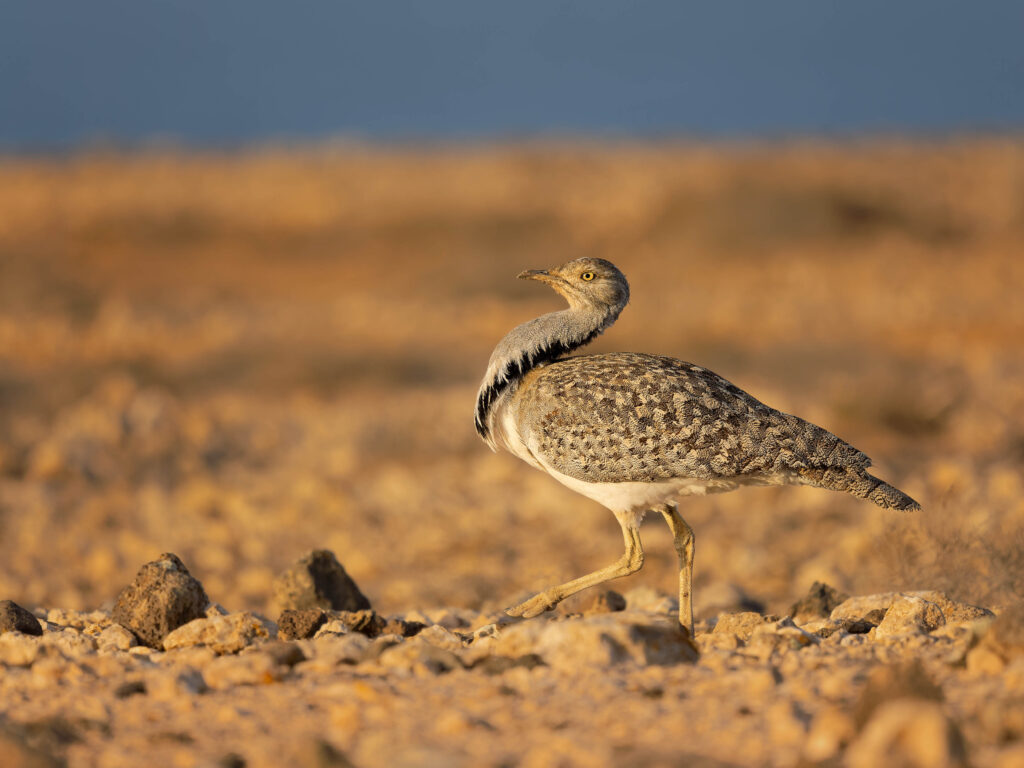
One of the most common birds on the island of Fuerteventura is the Berthelot’s pipit, but just because it’s common does not mean it’s easy to get a good image of. It usually jumps around on the ground, but here I was lucky that it jumped up on a rock near me where the background was further away and I could easily blur it out by zooming into 400mm with a wide open aperture of f/6.3.
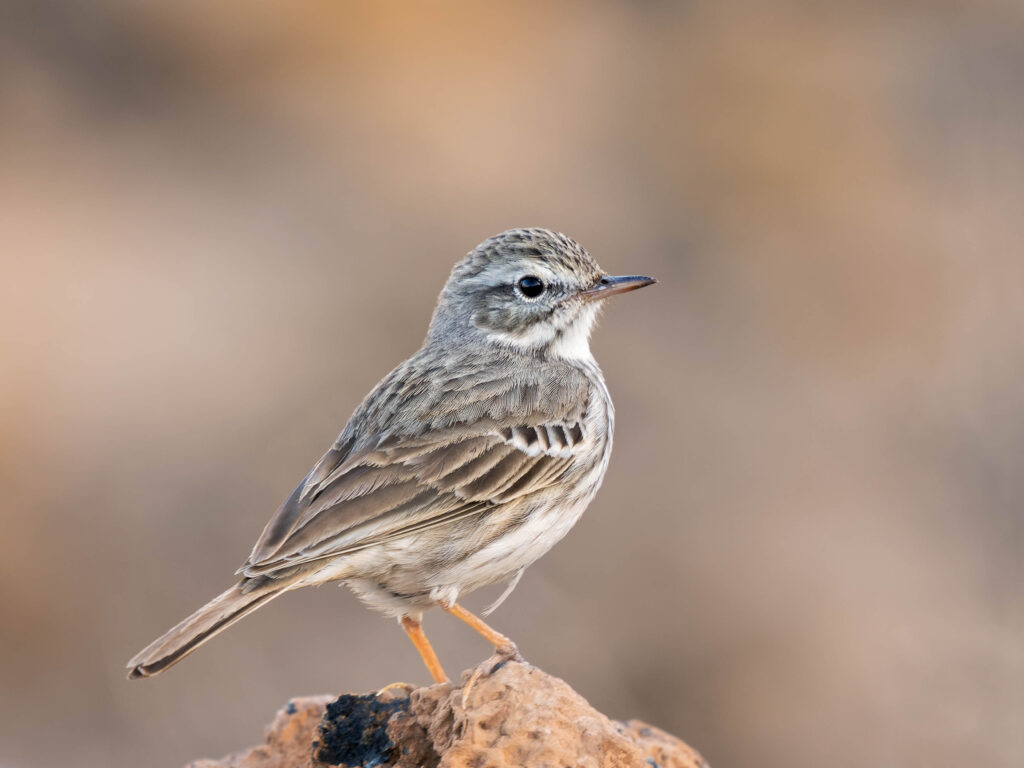
Early one morning I had made my way to the northwest coast of Fuerteventura. Here, I was having a great time crawling around in the sand photographing waders as the sun was rising. I had a great encounter with a sanderling in the sand and the a turnstone feeding in amongst the seaweeds.
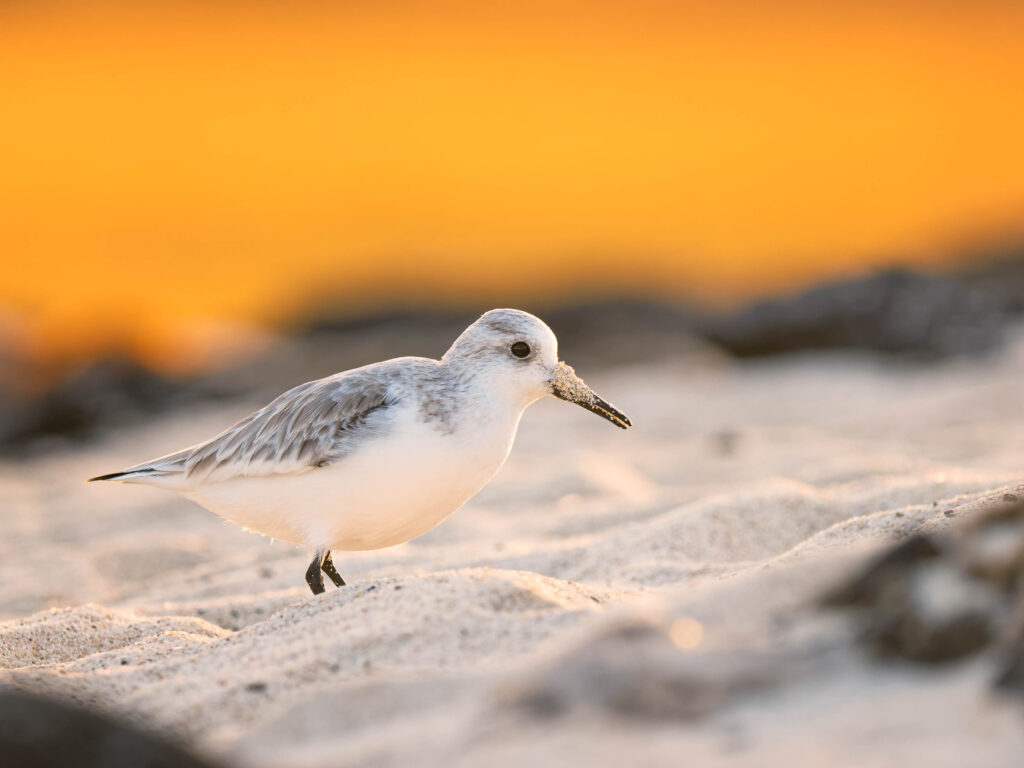

Sign up for my OM System Newsletter to receive Tips & Stories from the field directly to your inbox!
M.Zuiko 100-400mm Mark II for Close up photography
As it was November there weren’t many invertebrates to practice close-up photography with the 100-400mm in Scotland, luckily I found a great place near the coast in Fuerteventura with lots of dragonflies.
Using the 100-400mm at max reach of 400mm and as close as the minimum focus distance allows (1.3m) you can get a magnification of 0.57x. I love to use telephotos for close up photography, it’s much easier to photograph dragonflies when you can keep a little distance as they’re less likely to fly away. At 400mm and f/6.3 the bokeh is dreamy looking and you can create some beautiful images.
As the image stabilisation (IS) of the new 100-400mm now syncs with the camera it also makes it a lot easier to frame the subject, shoot at slower shutter speeds and use focus bracketing/stacking when photographing these small subjects.
The red darter was the most common dragonfly I found and here I had enough time to photograph one both front-lit and backlit in the early morning sun. I used a small box pattern to auto-focus on the head of the darter.
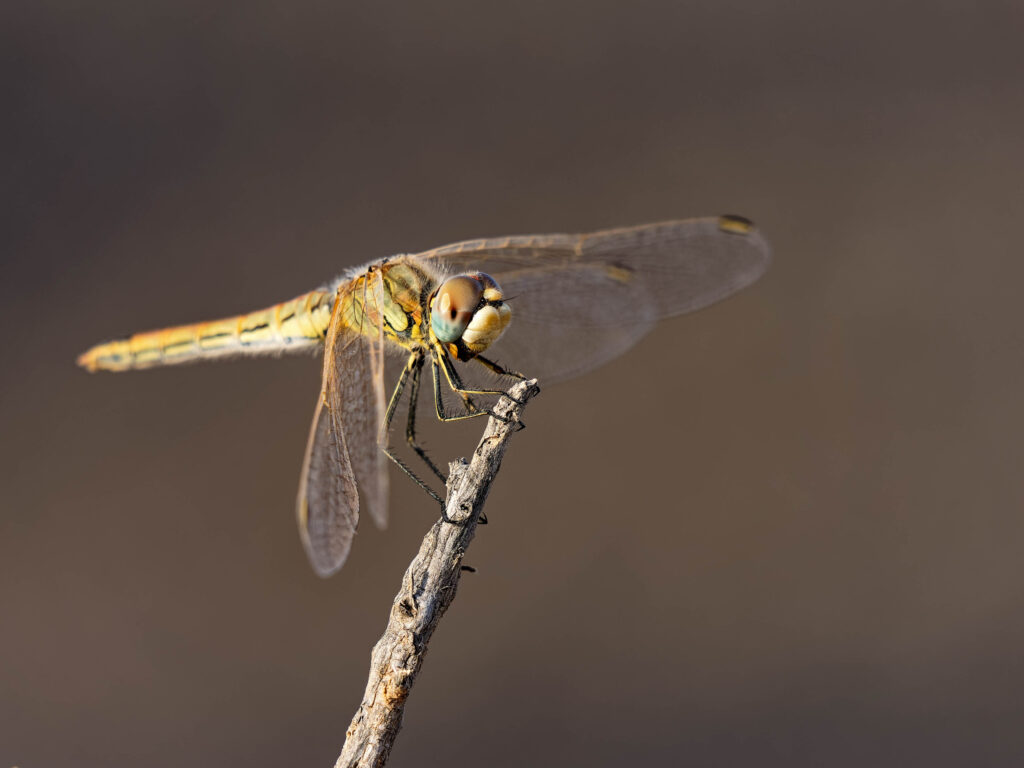
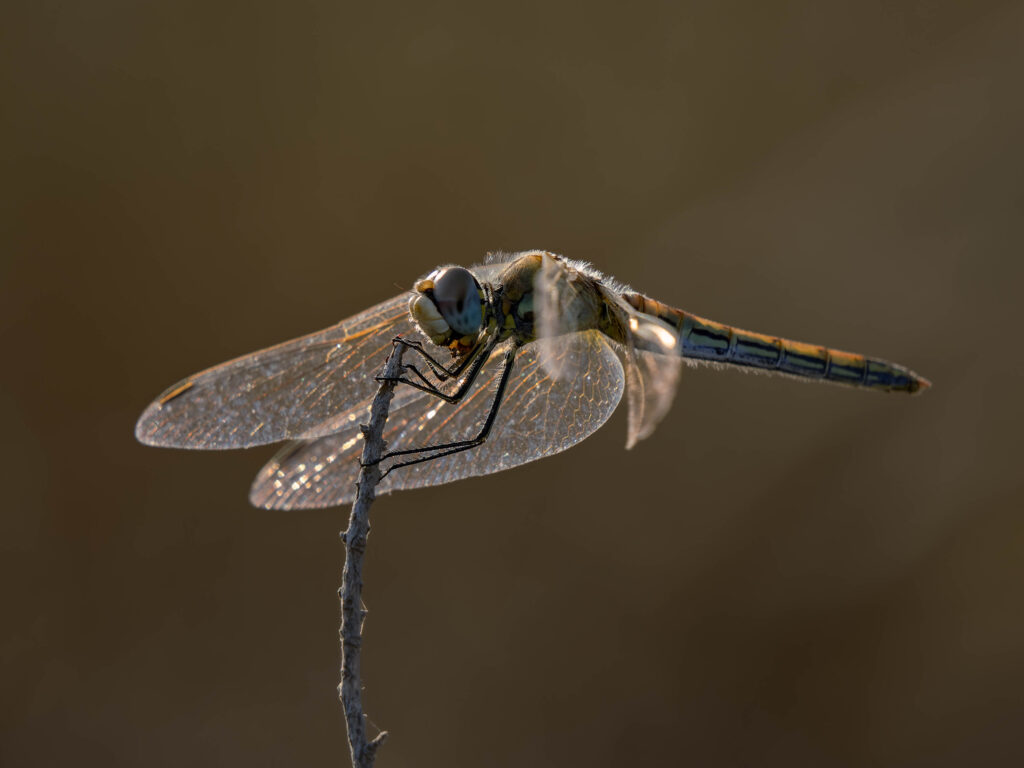
The 100-400mm II is Super Sharp
I’m really impressed with the sharpness of the new lens, my photos at 400mm are tack sharp. I believe I got so many sharp images with this lens because of the updates in IS. I’m constantly using slow shutter speeds, so this lens really suits my style of photography.
One day when I was out photographing Barbary ground squirrels, I had one come very close to me and I had to zoom back to 276mm just to fit the head of the squirrel in the frame. Can you see the reflection of me in the eye of the squirrel?

The M.Zuiko 100-400mm Mark II & Birds in Flight
One of the things I really wanted to test was how well the new lens could cope with birds in flight. My first chance at a bird in flight shot came when I was lying on a beach photographing spoonbills. Two of the birds had walked further out on some rocks when one of them flew right passed me. I missed that flight, but I got ready as I thought the second bird would soon follow, and sure enough only a few seconds later it followed suit.
I got several frames of the bird as it flew past, not all of them sharp, but several good ones to pick from. I really liked the wing position in this image and the fact that you can just about see some water droplets dripping form the legs.
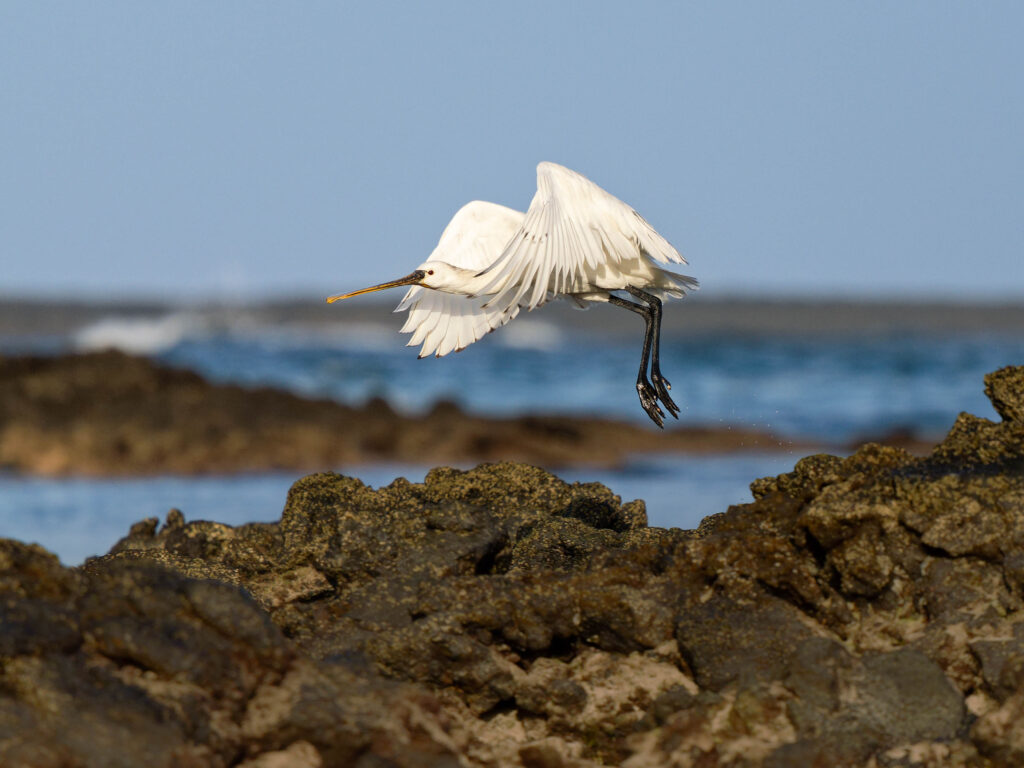
Back in Scotland I went to photograph red kites at Argaty to really test the lens at birds in flight photography. Though the 100-400mm chases with autofocus a little bit more than my 150-400mm f/4.5 it still performs really well. I’ll come out with some tips soon on my blog and YouTube Channel with a few tweaks I make to acquire autofocus with the 100-400mm.

Using the Teleconverter 1.4x on the 100-400mm Mark II
At my Forest Hide I was watching a nuthatch as it was taking some of the food I had put out and fly to various branches to stash it. I decided to try the 1.4x teleconverter on the 100-400mm II lens to give me extra reach so I could try to photograph the nuthatch as it stashed a nut.
Using the 1.4x teleconverter on the 100-400mm II gave me a max reach of 560mm, or 1120mm equivalent in full frame. That’s a crazy reach! My lowest aperture was then f/9 so I had to bring my ISO up to 2000 to get a shutter of 1/250s. I love how in this image I captured the nuthatch just after it had stashed a nut in a little hole that you can see in the image and then posed nicely just before flying off.
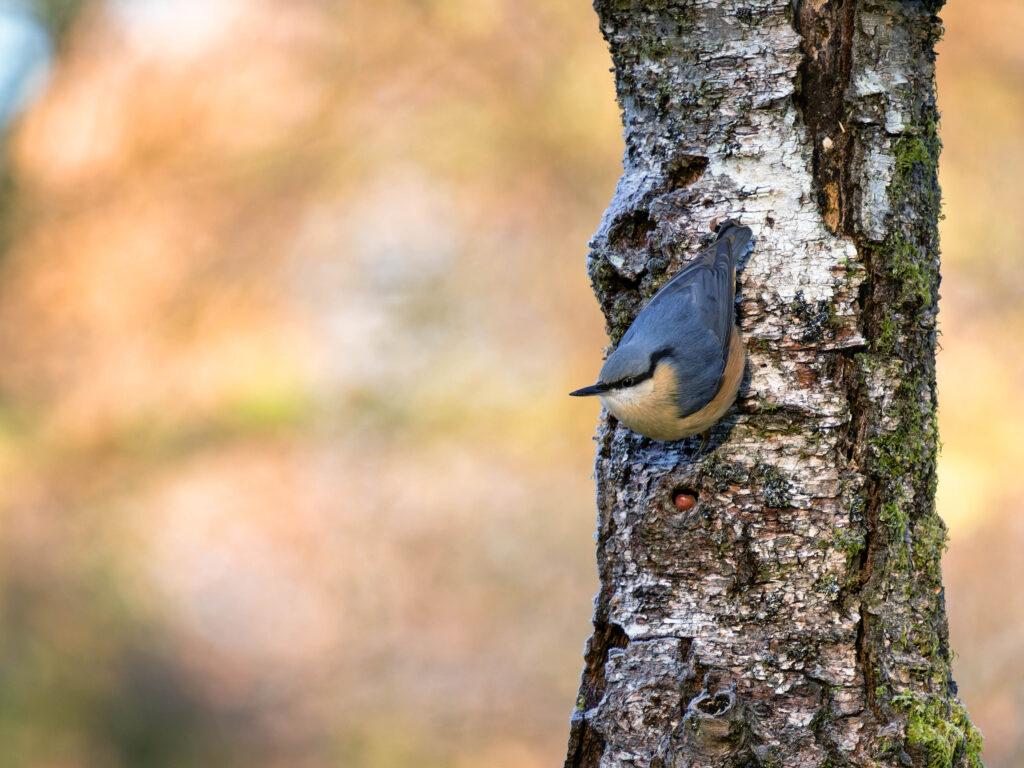

I’m very impressed with the results when using a teleconverter with the new 100-400mm lens. Only a slight softness to the image was noticeable and the autofocus may chase a bit more when using the teleconverter.
The incredible telephoto reach the 100-400mm gives you when attaching a teleconverter on makes the IS improvements invaluable, otherwise I’d have to use very fast shutter speeds if I wanted to photograph handheld.
M.Zuiko 100-400 Mark II Image Stabilisation Sync
The image stabilisation sync is a very welcome update in the new lens. I use slow shutter speeds all the time in my photography and I like to film handheld for my vlogs as well. When using the OM-1ii with the 100-400mm I can film wildlife at 400mm and not worry about shaky footage. All the photos in this blog post are taken handheld.
I really liked the reflections of this lighthouse in Fuerteventura, so before the sun had come up I got to test the image stabilisation. In this image I was standing and shooting handheld at 1/5 second.
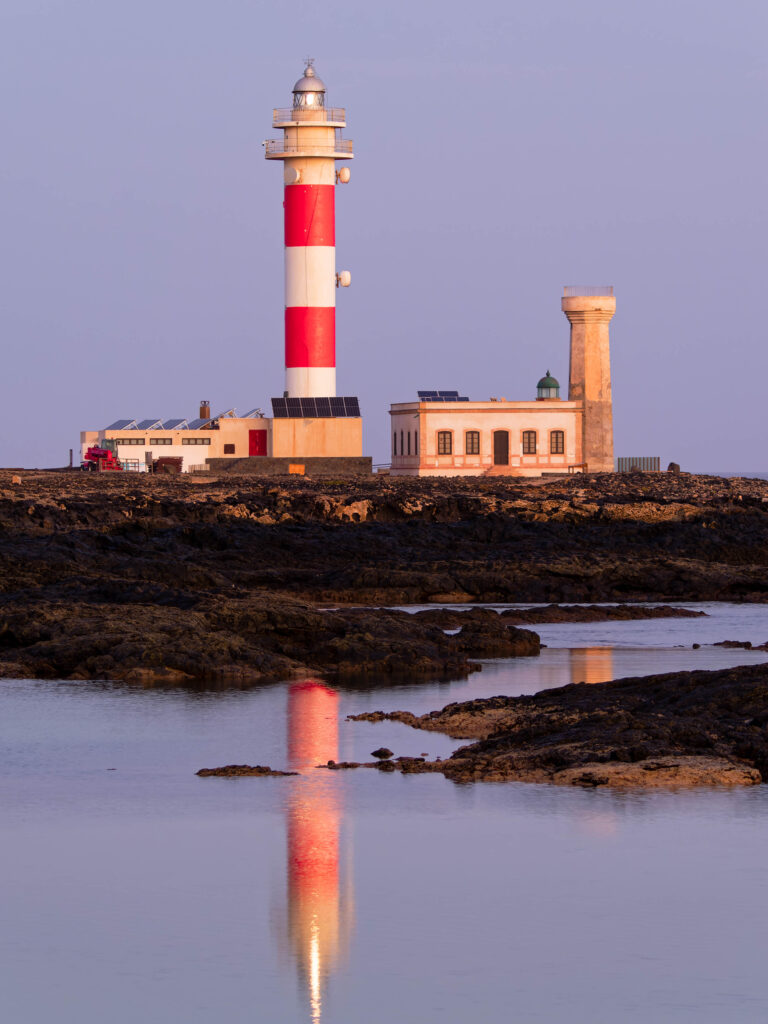
On a dark and cloudy day in the Cairngorms I photographed this crested tit at 1/30s with the new 100-400mm.

Tripod Foot – Simple but so Useful!
The fact that I can take off the tripod foot without taking the camera off the lens is a simple, but incredibly useful feature. As I mostly shoot handheld I don’t really need the tripod foot most of the time, but when I do, like when I shoot from a hide or using pro capture for longer stretches of time it’s so handy to be able to quickly put it on and take off again when I’m done.
100-400mm II on the OM-5
Mostly, I was using the 100-400mm II on my OM-1ii, however I also tried out the lens on my OM-5 with great results. In the image below I got a blue tit landing on a nearby branch in the rain. I used a slow shutter speed of 1/100s to get the streaky raindrops in the image.

Final Thoughts
I honestly love using this lens, the improved image stabilisation really suits my style of photography. The IS Sync also means that I can film wildlife handheld for my vlogs without worrying about shaky footage.
The images are tack sharp even at 400mm and by considering my background I can easily blur it out with an aperture of f/6.3.
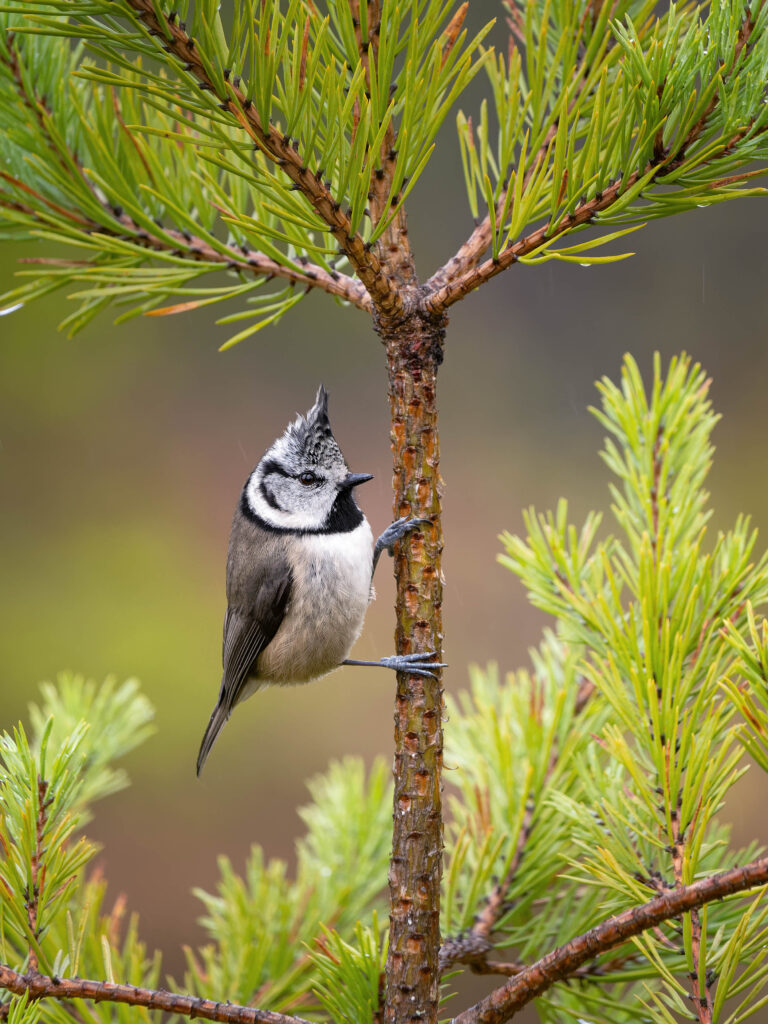
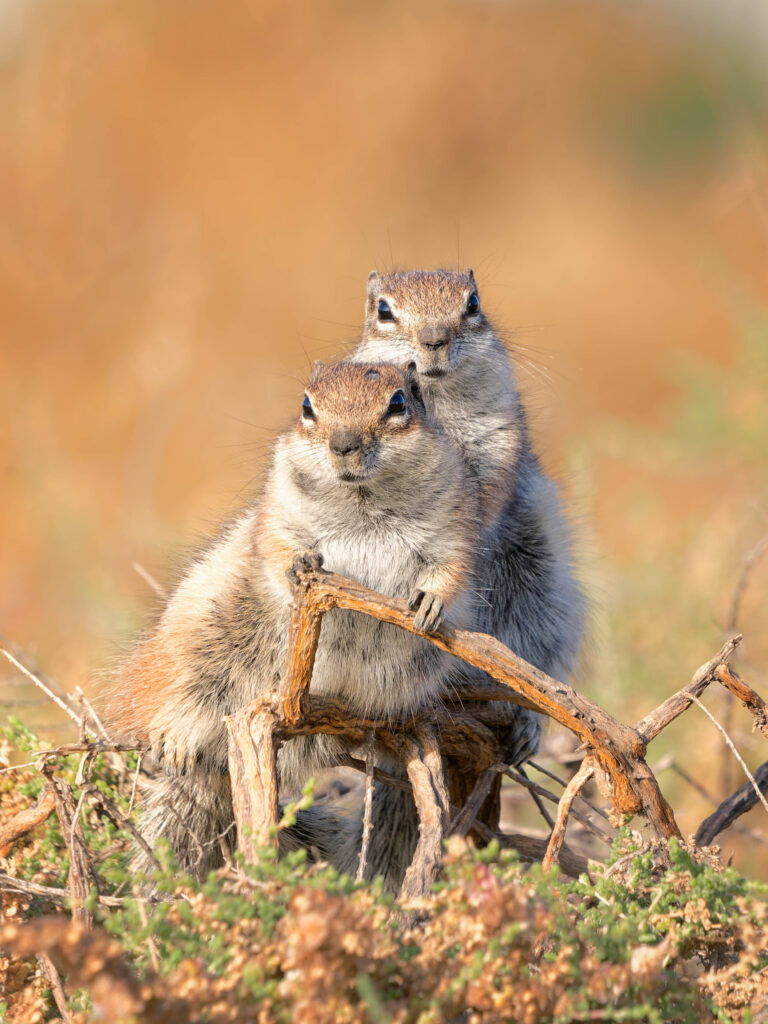
The compact and lightness of the lens even meant that when I travelled to Fuerteventura with only my smallest 18L Mindshift camera bag, which was small enough to go as free carry-on luggage. The lens is in there somewhere, as well as a laptop 🙂
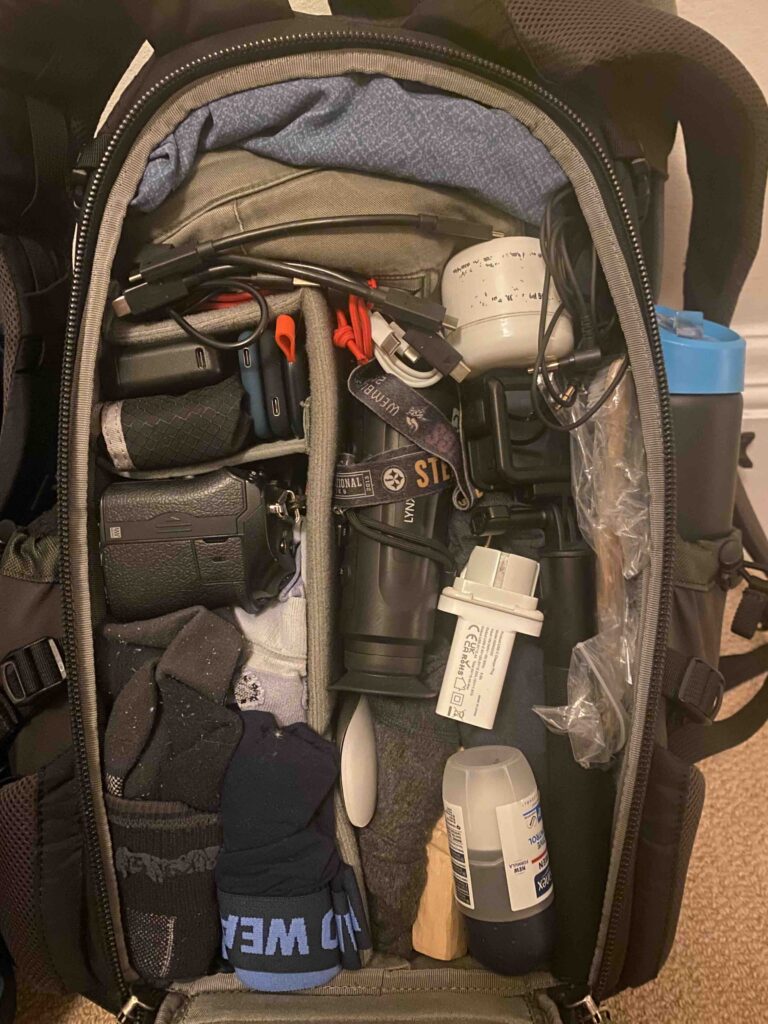
Though I’ll still mainly use my 150-400mm f/4.5 (1.25x) for wildlife photography it’s great to know that I can trust the 100-400mm f/5-6.3 IS Mark II whenever I want or need a compact lightweight lens.
Is this a piece of kit you’re going to add to your lineup?
Hi Espen
Looks a good upgrade but having spent £6000 on the 150 -400 I can’t justify it. Fuerteventura is great for birds, there in March last year…trumpeter finches, spectacled warbler, great grey shrike, cattle egret an an unusual red rumprd bulbul all found a short walk fro the hotel. Ground squirrels too, almost tame.
Great vid, thanks for showing, I have subscribed since you were a Canon shooter and your journey was what inspired me to change to OM. Best wishes
Ired
Hi Brian, thanks a lot for following along for so long 🙂 Hope you’re getting on well with the best lens of all!
Hi Espen,
Thanks so much for demonstrating the 100-400mm f/5-6.3 II
The capability exceeds my expectations, Ive just acquired an OM-1 and am looking for a bigger lens for my wildlife and long lens macro shots, currently using the canon 100-400mk ll (DSLR Body)
Have om1 but have been using Canon sx70 for birds as the longer lens gets a bit heavy. Going Africa again in September so will invest in the 100-400. You have some excellent pics.